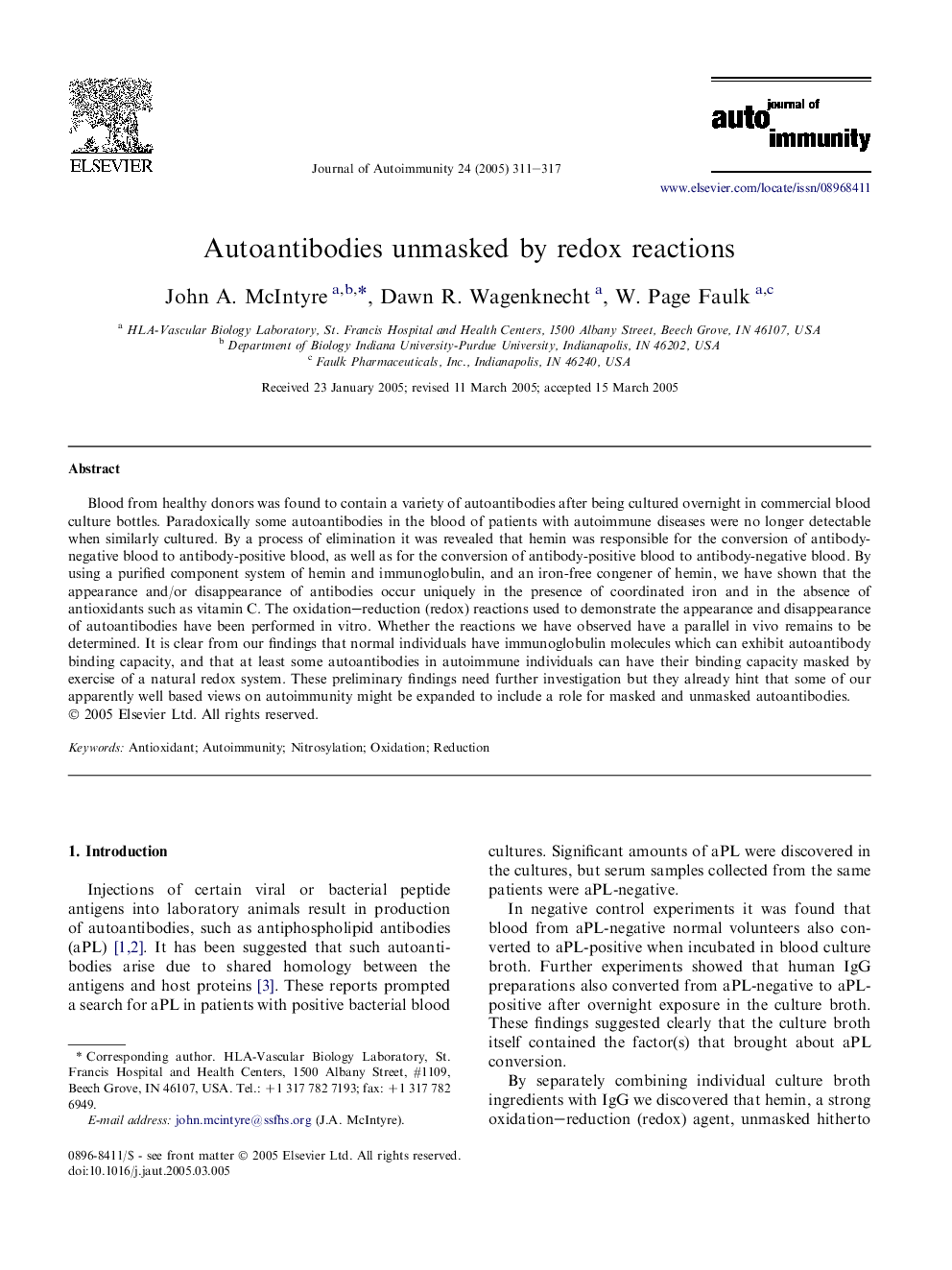| Article ID | Journal | Published Year | Pages | File Type |
|---|---|---|---|---|
| 9267870 | Journal of Autoimmunity | 2005 | 7 Pages |
Abstract
Blood from healthy donors was found to contain a variety of autoantibodies after being cultured overnight in commercial blood culture bottles. Paradoxically some autoantibodies in the blood of patients with autoimmune diseases were no longer detectable when similarly cultured. By a process of elimination it was revealed that hemin was responsible for the conversion of antibody-negative blood to antibody-positive blood, as well as for the conversion of antibody-positive blood to antibody-negative blood. By using a purified component system of hemin and immunoglobulin, and an iron-free congener of hemin, we have shown that the appearance and/or disappearance of antibodies occur uniquely in the presence of coordinated iron and in the absence of antioxidants such as vitamin C. The oxidation-reduction (redox) reactions used to demonstrate the appearance and disappearance of autoantibodies have been performed in vitro. Whether the reactions we have observed have a parallel in vivo remains to be determined. It is clear from our findings that normal individuals have immunoglobulin molecules which can exhibit autoantibody binding capacity, and that at least some autoantibodies in autoimmune individuals can have their binding capacity masked by exercise of a natural redox system. These preliminary findings need further investigation but they already hint that some of our apparently well based views on autoimmunity might be expanded to include a role for masked and unmasked autoantibodies.
Related Topics
Life Sciences
Immunology and Microbiology
Immunology
Authors
John A. McIntyre, Dawn R. Wagenknecht, W. Page Faulk,
